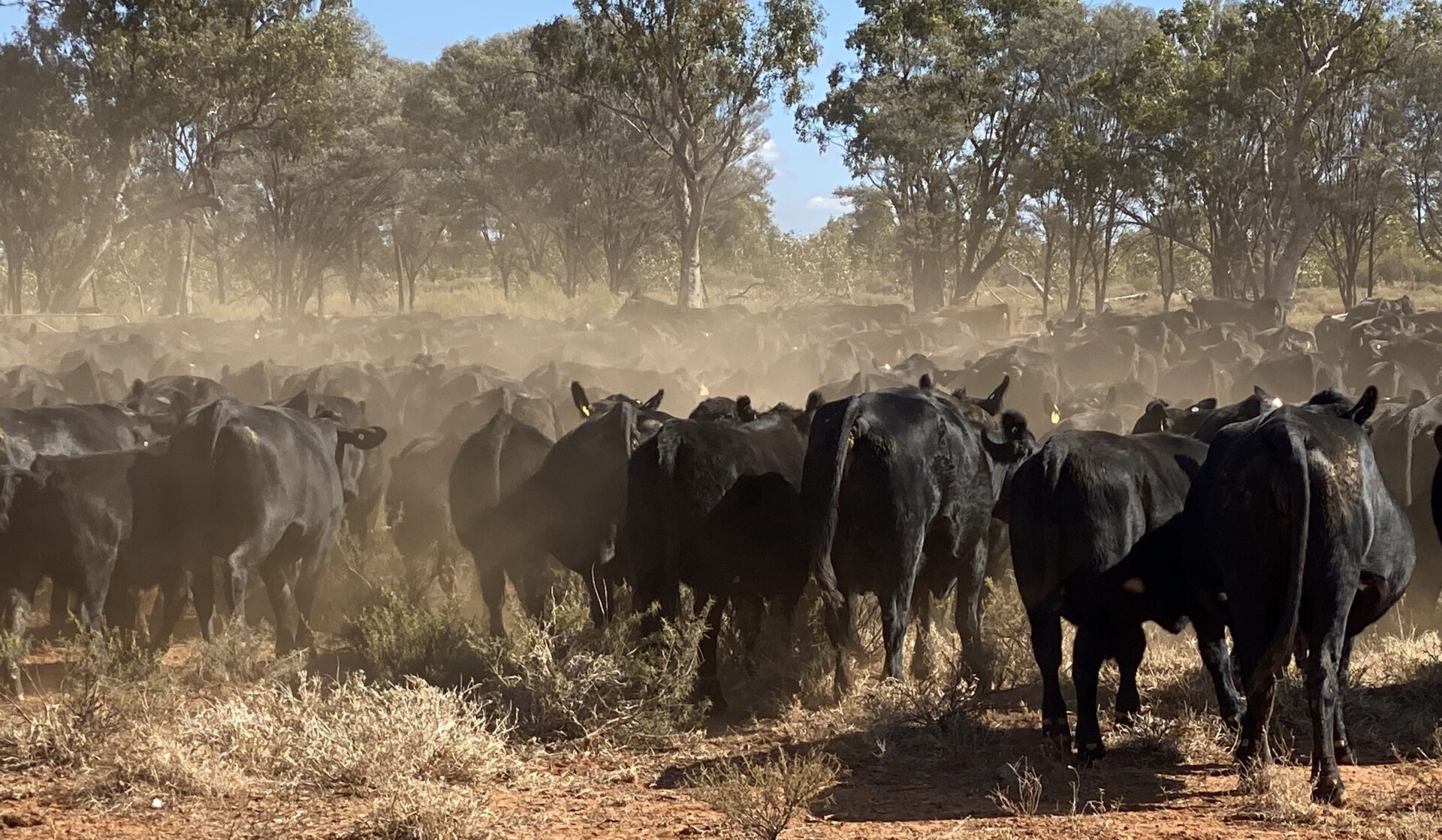Angus success at Myendetta


The Mills family in southwestern Queensland has enjoyed consistent success with Angus since introducing the breed to their commercial beef cattle business 14 years ago.
Reece Mills and his partner Erin Cosgrove run the operation with his parents Aubrey and Kay Mills, while raising their children, Grace, George, and Isabelle.
Myendetta is an aggregation of five properties, totalling 48,000 hectares of freehold land, fronting the Diamantina Developmental Road, and intersected by the Mitchell Highway, 30km southwest of Charleville, Qld. The family also farm 10,000ha between Moree, NSW, and Goondiwindi, Qld.
The family purchased Myendetta in 2010, with the other properties added to their holdings since. Their land is highlighted by 40km of Warrego River frontage, featuring 14,000ha running back from flood out coolibah country, growing strong stands of Mitchell grass, to brigalow, gidgee, wilga, and sandalwood country where a dense stand of buffel grows, the balance being soft red mulga, box and kurrajong country where native grasses, buffel and herbage grows in season as well as a plentiful supply of low edible mulga.
The Mills began utilising Angus bulls to put across their Brahman-based cow herd when they bought Myendetta, though today Angus blood is dominant.
“We’re currently running 2400 females, and of those close to 2000 would be at least 75 per cent Angus. We’re looking to replace the remaining 400 breeders with home-bred Angus heifers within the next year. We’re striving to make the entire herd, black and polled,” Reece Mills said.
He said the adaptability and versatility of the Angus hold great appeal.
“Their homozygous black and polled genetics are very appealing. We find that Angus weaners show great growth and length attributes and are sought after by backgrounders and feedlotters.”
The Mills generally target the Woolworths, Pure Angus, and 75pc Angus feedlot markets with their steers, post-weaning off oats at 12 to 14 months old and weighing 380 to 400kg, but they couldn’t get their oats crop planted in time this year.
To counter this issue they recently sold 490 Angus and Angus-cross 8 to 10-month-old steers through the Dalby Saleyards, with some of their pens topping the sale at 382c/kg, while their heaviest line from the draft averaged 327kg.
The Mills control join for three months, split between spring and autumn calvings, with heifers joined at 12 months old.
“We pregnancy test every year and aim to keep our conception and weaning rate above 90pc. Any cows that preg-test empty or fail to wean a calf are culled, with home-bred heifers kept as replacements.
“We recently sold a line of empty cows averaging 662kg off low mulga, which topped their section at Dalby.”
Mr Mills said one of the primary keys to their operational success has been the control provided through having quality infrastructure.
“We’re in the business of producing kilograms of beef so we aim to ensure each kilogram is as profitable as possible while being produced sustainably. We have 160km of exclusion fencing, the majority of our internal fencing has been replaced, we have close to 50km of internal laneways connecting nearly all of our paddocks to two sets of professionally designed and built centrally located cattle yards, and all of our water is capped and piped from four bores.
“This all allows for ease of management to ensure only our most productive females are retained and we have never had to destock due to dry weather.”
Mr Mills said they had a great start to spring, though below-average rainfall fell in summer and autumn.
“The country has dried off, but we have a big body of dry feed, and the low edible mulga is coming into its own now, as it does this time every year, we have our cattle transitioning onto that.”
By Matt Sherrington, Queensland Country Life
Feature image: A selection of the 490 Angus and Angus-cross steers that the Mills family recently sold through the Dalby Saleyards, Qld. The heaviest line of the draft averaged 327kg. Picture supplied